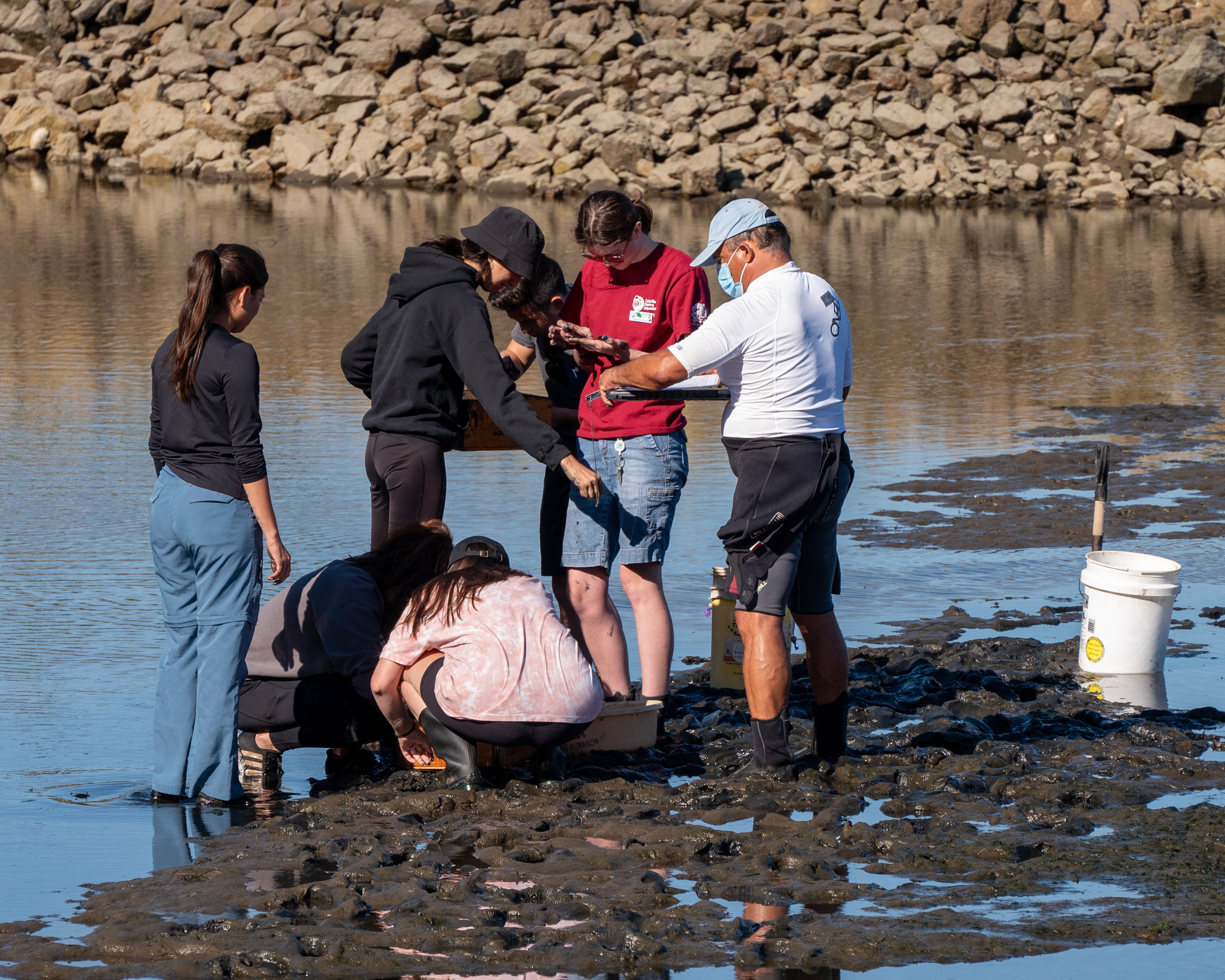Conservation
For centuries, we have thought of the oceans as limitless. Standing on shore, the ocean appears vast and never ending, a mysterious underwater world that stretches beyond the horizon. But research during the last 20 years proves that the oceans are limited and people’s actions are taking a toll. Learn more about the challenges facing our oceans and find out how you can become an ocean guardian by doing simple things during your daily activities.
Pollution
The ocean’s sparkling surface disguises an unhealthy reality underneath. In Los Angeles, rain washes trash and chemicals on our streets into storm drains that flow straight to the ocean. A rising tide of pollution is sickening and killing marine life. Birds often mistake small pieces of plastic for food, sea turtles mistake plastic bags for sea jellies and chemicals sicken many ocean animals. Find out more about what you can do to prevent trash and pollution from reaching the sea.
Watersheds: It all Flows to Sea
Learn about the history of DDT and its impact on Southern California's ocean food chain by downloading the What's the Catch comic book.
We may not realize it, but what we do at home can greatly affect our ocean. Trash and chemicals wash down our streets and flow to the nearby ocean through our storm drains.
Make a difference from home!
Approximately 80% of the pollution in the ocean comes from land-based sources, which means, in part, from the streets, sidewalks and parks around your home. Help stop pollution at the source!
Join the California Coastal Commission each Saturday in September, from 9-12 noon, and beautify your neighborhoods with friends, family and neighbors (at a distance) by picking up litter.
Coastal Cleanup Resources:
- California Coastal Commission
- Heal the Bay
- Ocean Conservancy
Use the Clean Swell or the Marine Debris Tracker Apps to record your cleanup efforts, share with your friends, and provide data for researchers!
Overfishing
There aren't enough fish in the sea! Despite California fishing regulations, many species of marine animals living along our coast are heavily impacted from decades of overfishing. This is an even greater concern internationally; many countries have few fishing regulations or allow destructive fishing practices. Fish can't reproduce fast enough to replace what we're taking. By becoming an educated consumer, you can help support sustainable fisheries that protect fish populations for future generations.

Seafood Watch
The choices we make drive the seafood markets. You can make a difference by speaking up and supporting those fisheries and fish farms that are better for the environment. Just by asking the question, “Do you sell sustainable seafood” lets businesses know that you support purchasing sustainable seafood and encourages them to provide it as an option. Cabrillo Marine Aquarium is a partner of the Monterey Bay Aquarium’s Seafood Watch program. To learn more about what you can do to help protect the ocean, visit Seafood Watch to learn more.
Habitat Loss
Thanks to coastal development, thousands of acres of crucial habitat have vanished putting many species at risk of extinction. Before the 1900s, there were 50,000 acres of wetlands in Southern California. Today less than 11,000 acres remain and continued development threatens even these habitats. Research shows that one of the best ways to keep marine life populations healthy is by protecting an entire coastal habitat. Based on this concept, California launched a network of underwater parks in Southern California that stretches from Point Conception near Santa Barbara to the Mexico border.
Southern California's Marine Protection Areas (MPAs) The State of California's new MPAs for our region went into effect on January 1, 2012. Find out more about underwater parks by watching this 13 minute video produced by the Southern California Aquarium Collaborative.
Have you visited a MPA? Here is a video from the Ocean Conservancy illustrating ways we all can enjoy MPAs.
The California Marine Sanctuary Foundation put together a website packed with MPA resources.
- Download printed publications on MPAs including brochures, fact sheets, maps and posters.
- Enjoy a variety of MPA multimedia including videos, 3-D animations and presentations.
- Review teaching and training materials focused on MPAs targeting different audiences.
- Peruse the entire website to find the best MPA resources to meet your needs.
Climate Change
The ocean and atmosphere work together creating the world’s climate. When people burn coal and other fossil fuels for energy, excess carbon dioxide (CO2) is emitted into the atmosphere. Higher amounts of CO2 cause more heat to be absorbed and trapped in the atmosphere, increasing the average global temperature. A lot of this extra heat and CO2 is being absorbed by the oceans, leading to ocean temperature and chemistry changes. These changes affect ocean habitats and marine life, from the tiniest plankton to the biggest whales.

Do you know your footprint? Do you know your ecological footprint? Ecological footprints is a quick measure of how many "Earths" it takes to support your lifestyle. Calculate your Ecological Footprint.
Coastal Monitoring
Our coastal monitoring projects heavily rely on community science: a process where volunteers work with staff to help collect data for near-shore monitoring of local marine habitats and biodiversity. There are two long-term field research projects that depend on volunteers. The Cabrillo Coastal Park Survey takes place two times a year, and the Peninsula Shorewatch Survey takes place once a year. Each survey relies on the help from our community to properly identify, count, measure and weigh animals. The data collected provides important information to Aquarium staff and management agencies on the health and status of our local marine life.

No experience is necessary – you'll get wet, sandy and fishy – but, you'll have fun and learn a lot!